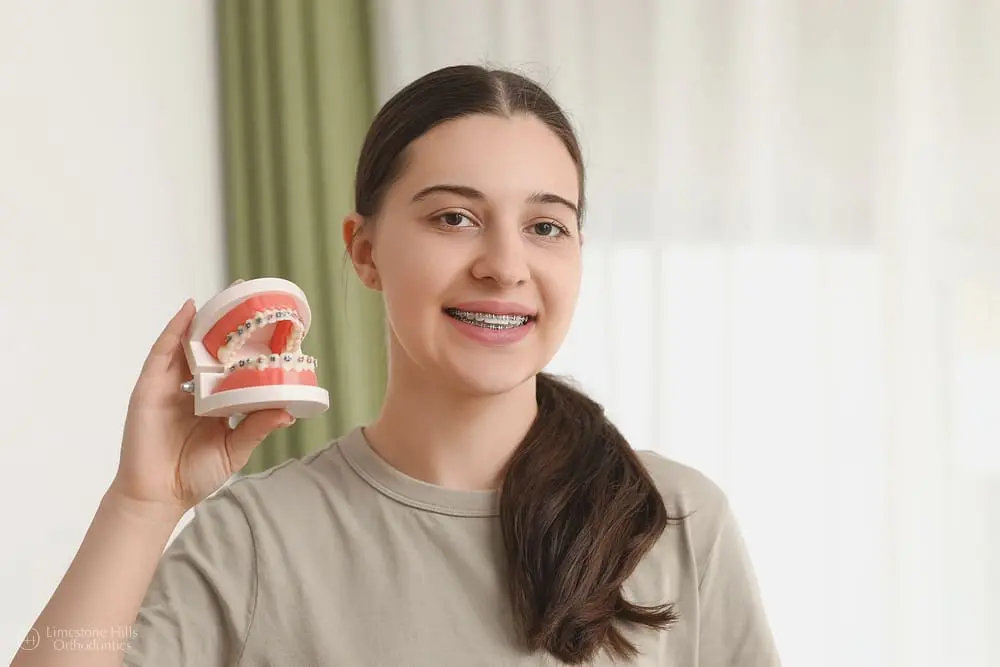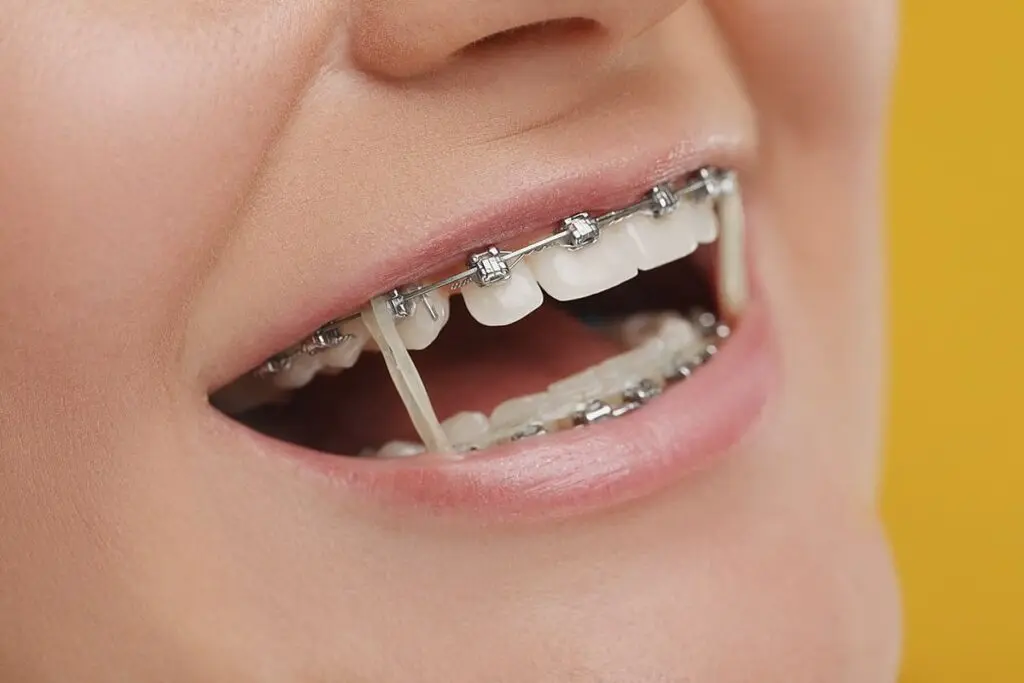When discussing overbite vs underbite, it all comes down to how your teeth and jaw are aligned. An overbite happens when your upper teeth extend over your lower teeth, often resulting in a “rabbit teeth” appearance. On the other hand, an underbite occurs when your lower teeth sit in front of your upper teeth, sometimes giving a “bulldog-like” look. Both overbite and underbite can affect the balance of your smile and may require orthodontic treatment to improve chewing, speaking, and overall jaw alignment.

Defining Overbite vs Underbite
Both overbite and underbite refer to forms of malocclusion, which means misalignment of the teeth when the jaws are closed.
- Overbite: This occurs when your upper teeth significantly overlap your bottom teeth. While a slight overbite (1–2 mm) is common, a pronounced overbite can lead to dental complications.
- Underbite: This is when your lower teeth protrude past your upper teeth, creating a reverse alignment. Underbites are less common but can have a significant impact on function and appearance.
Understanding these conditions is the first step in finding the right treatment.
Causes and Contributing Factors
What leads to these bite issues? There are multiple factors:
1. Genetic Factors
Jaw shape and size often run in families. If misaligned bites are hereditary, someone in your family might have had a similar condition, whether an overbite vs underbite.
2. Habits During Childhood
Some behaviors during early childhood influence bite alignment, including:
- Prolonged thumb-sucking
- Excessive use of pacifiers beyond 2–3 years of age
- Tongue thrusting, where the tongue presses forward against the teeth
3. Jaw Development Discrepancies
Uneven growth of the upper or lower jaw during childhood can result in misaligned bites. External factors or injury during jaw development may also contribute to this problem.
By identifying these causes, we can better tailor treatment plans suited to your needs.
The Impact on Oral Health
Both overbites and underbites can affect more than just the way your smile looks. They can result in a range of oral health problems, including:
1. Jaw Pain and Discomfort
A misaligned bite puts extra stress on the jaw joints, often resulting in pain or temporomandibular joint dysfunction (TMD). This can lead to jaw stiffness and discomfort during chewing or speaking.
2. Tooth Wear and Tear
When your teeth don’t align properly, some teeth receive more pressure than others. This increases the risk of wear and tear, leading to fractures, enamel erosion, or sensitivity.
3. Speech Challenges
Severe cases of bite misalignment can make it harder to pronounce certain words, resulting in speech issues.
4. Gum Problems
Overlapping teeth caused by an overbite may create areas that are harder to clean, increasing the likelihood of plaque buildup, gum disease, and cavities.
Treatment Options
Thankfully, modern orthodontics offers a variety of treatments for overbite and underbite. These options cater to patients of all ages and are carefully tailored to the individual’s condition.
1. Braces
Traditional metal braces remain one of the most effective ways to fix overbite and underbite. Braces gradually realign teeth and correct the bite over time. Advanced options like ceramic braces provide a subtler appearance while delivering the same results.
2. Clear Aligners
Products like Invisalign offer a discreet and removable solution to align teeth. This option is popular with teens and adults who want flexibility in their orthodontic treatment. Clear aligners are ideal for mild to moderate cases of overbite vs underbite.
3. Surgical Solutions
For severe cases where the jaw structure is heavily misaligned, orthognathic surgery may be needed. This involves repositioning the upper or lower jaw for improved alignment. While surgery is more invasive, it provides permanent results for complex cases.
Treatment Costs:
- Braces: $3,000–$7,000, depending on severity and duration
- Clear Aligners: $3,500–$8,000 based on the complexity of the case and aligner brand
- Jaw Surgery: $20,000–$40,000, often covered partially by insurance for medical necessity
Long-Term Benefits of Treatment
Correcting an overbite vs underbite does much more than improve your smile. There are significant long-term advantages, including:
- Improved Oral Function: Easier chewing, speaking, and biting down without discomfort.
- Healthier Teeth & Gums: Proper alignment eliminates strain on your gums and reduces the risk of cavities or gum disease.
- Enhanced Confidence: A straight, beautiful smile boosts self-esteem and leaves you feeling more confident in social interactions.
- Reduced Jaw Pain: Alleviating pressure on your jaw joints leads to less discomfort and better functionality.
Investing in treatment now prevents oral health complications down the road.

Why Choose Our Austin, TX Orthodontic Practice?
At our Austin orthodontic office, we’re dedicated to providing top-quality, personalized care to every patient. Here’s why families trust us with their orthodontic needs:
Expert Orthodontic Care
Our skilled orthodontists have years of experience treating children and teens with jaw alignment issues. We specialize in effective solutions like reverse pull headgear to help patients achieve great results.
Customized Treatment Plans
We understand that every smile is unique. That’s why we design personalized treatment plans tailored to meet your child’s specific needs and goals.
Comprehensive Support Throughout Treatment
From your first consultation to the final results, our friendly team will be with you every step of the way—answering questions, making adjustments, and offering expert advice.
Wide Range of Treatment Options
Along with reverse pull headgear, we offer a variety of options, including Invisalign and traditional braces, ensuring we have the right solution for every patient.
Book Your Free Consultation Today!
Visit our Austin, TX office for a free consultation! We’ll assess your teeth, review treatment options, and discuss how we can help you achieve a straighter, more confident smile. Scheduling is easy—just give us a call or visit our website to choose a time that works best for you. Our team is excited to help guide you on your journey to a beautiful smile!
About the Authors
Dr. Rodrigo Viecilli – Orthodontist in Austin, TX
Frequently Asked Questions
What is worse, overbite vs underbite?
Both can cause discomfort and affect your smile, but they each have their own set of challenges. Overbites might lead to issues like jaw pain or excessive wear on your teeth, while underbites can sometimes cause difficulties with chewing or speaking.
Does overbite get worse with age?
So, when it comes to overbites, it’s kind of like how some things in life tend to change as we get older. For some folks, an overbite might become more noticeable with age due to factors like natural shifts in teeth alignment, changes in jaw structure, or even habits like teeth grinding. But don’t worry too much! There are plenty of options out there to help manage or correct an overbite, whether you’re a kid or an adult.
When is it too late to fix an overbite?
It’s never really too late to fix an overbite! While it’s true that addressing dental issues is often easier during childhood or adolescence when the jaw is still growing, adults have plenty of options too. Modern orthodontics offers a variety of treatments, like braces or clear aligners, that can help correct an overbite at any age. So, whether you’re 15 or 50, there’s likely a solution out there for you.
